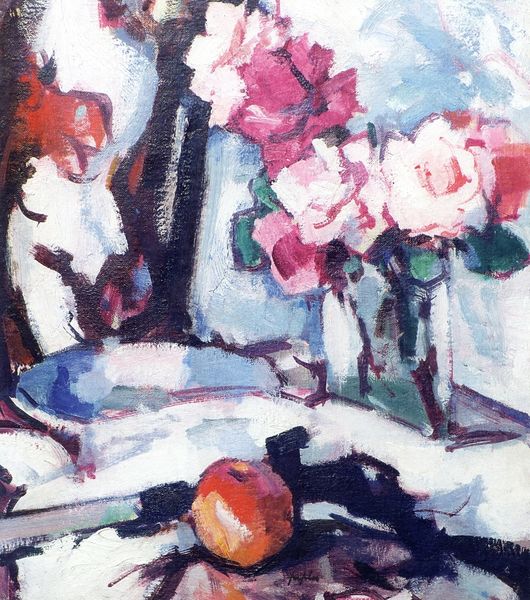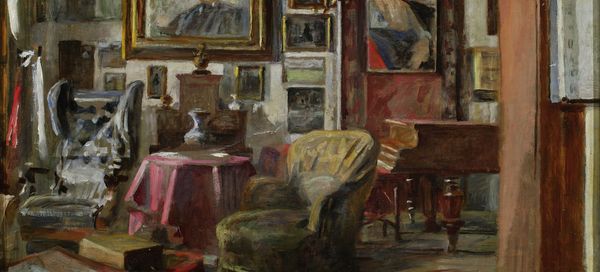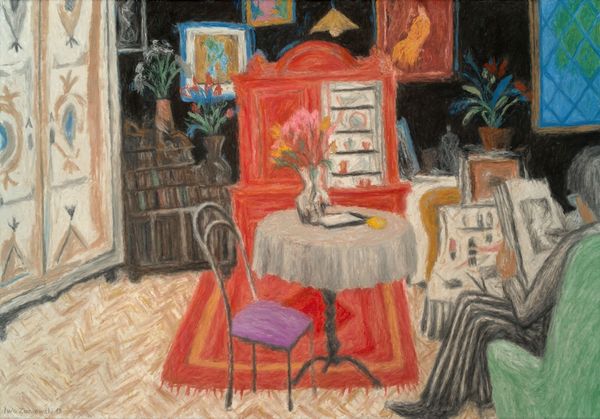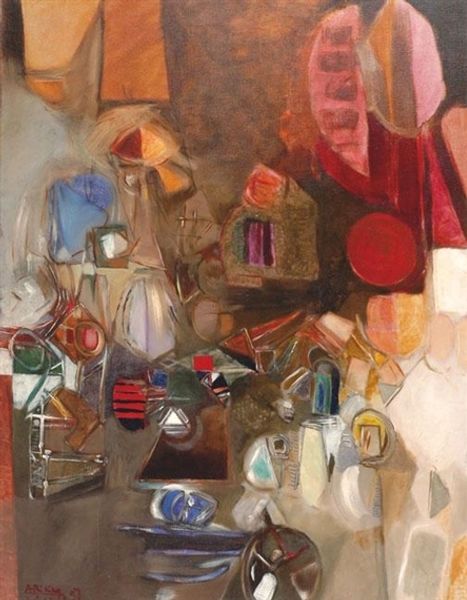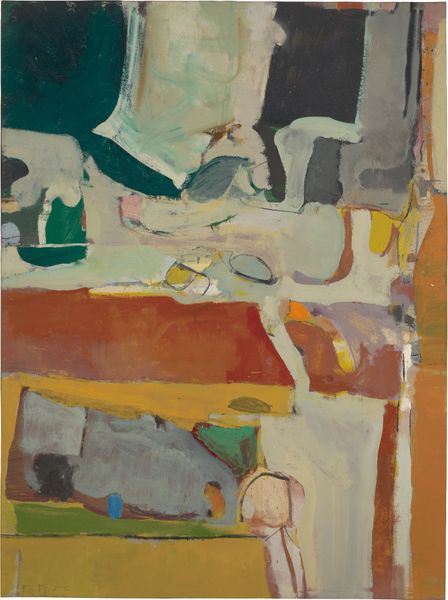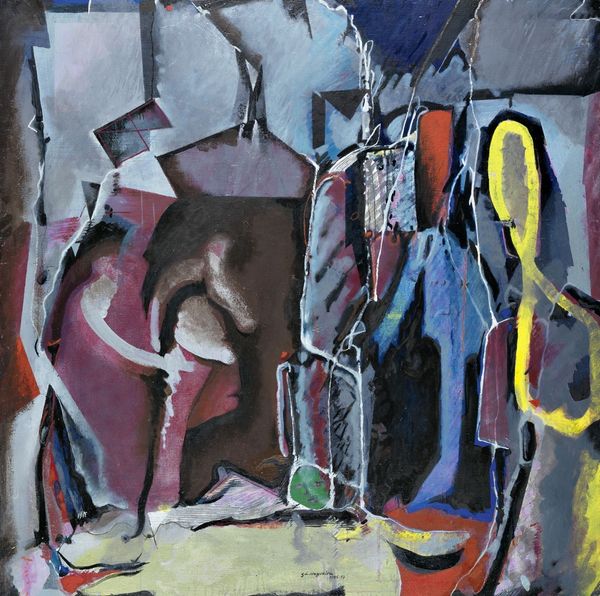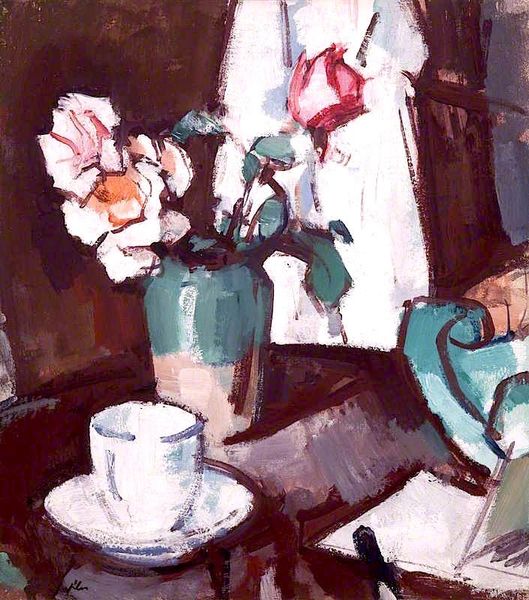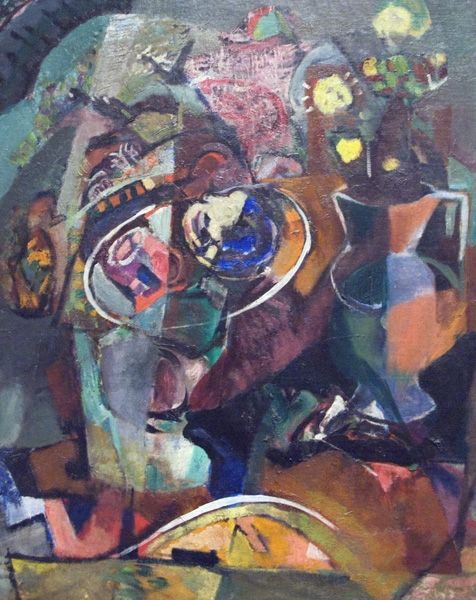
painting, oil-paint, impasto
#
painting
#
oil-paint
#
oil painting
#
impasto
#
scottish-colorists
Copyright: Public domain
Editor: Samuel Peploe's "Still Life with Statuette and Books," painted in 1923, has a rather charming quality to it. The impasto technique really brings out the colours, making the everyday objects pop. What do you see in this piece? Curator: It’s interesting to consider the arrangement, isn’t it? What do books, a teacup, and a statuette signify when brought together? This selection hints at intellectual pursuits and domestic life coexisting. Perhaps Peploe is capturing a moment of quiet contemplation. Editor: The statuette feels quite classical juxtaposed against the boldness of the colors. Curator: Precisely! The contrast is key. The statuette symbolizes enduring tradition, while the vivid colors speak to modernism. It's the push and pull between the past and present, a common thread in art of this period, often mirroring broader societal tensions. What might the cup symbolize for you? Editor: I suppose the cup and books, more intimate everyday objects, balance the idealized form of the sculpture. It creates this really interesting, personal dialogue. Curator: I agree. The cultural memory embedded in the books alongside the domesticity of the cup suggests a learned individual finding solace and inspiration within the everyday. Perhaps Peploe himself. Editor: That makes sense. I hadn’t considered how the symbols accumulate like that. Curator: The emotional and psychological weight these objects carry become clear when viewing the still life, revealing a connection to something deeper. Editor: It’s almost as if the image is reflecting a complex inner world of Peploe’s life! Thank you! Curator: A fascinating way to reflect on Peploe and his engagement with both the visible and invisible worlds.
Comments
No comments
Be the first to comment and join the conversation on the ultimate creative platform.
